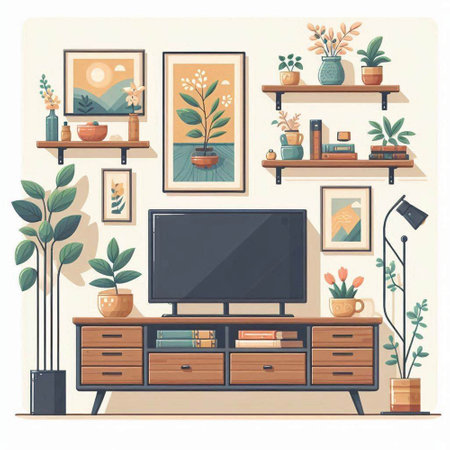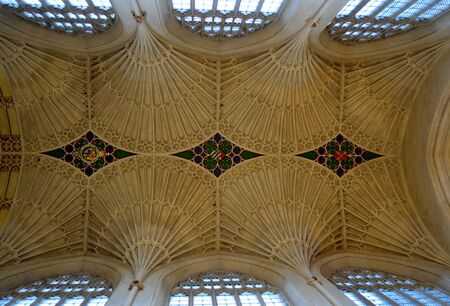1. Setting the Stage: The Festival of Britain in 1951
In the heart of post-war Britain, 1951 marked a pivotal moment with the arrival of the Festival of Britain. This ambitious national event was more than just an exhibition; it was a purposeful showcase designed to lift spirits and redefine British identity after years of hardship. Organised on London’s South Bank and across the country, the festival set out to celebrate British achievements in science, technology, architecture, and the arts. Its aim was clear: to foster optimism and offer a glimpse into a brighter future shaped by modern design and innovation.
The Festival’s cultural significance cannot be overstated. It stood as a symbol of renewal—a chance for Britons to step out from under the shadow of war and rationing, and to embrace creativity, colour, and new ways of living. The very layout of the festival grounds, with their striking riverside pavilions and bold use of materials like glass and aluminium, echoed this forward-thinking vision.
Importantly, the Festival of Britain became a catalyst for what we now know as mid-century aesthetics in the UK. It drew together leading designers, artists, and architects who embraced clarity, simplicity, and function without sacrificing warmth or character—a distinctly British take on modernism. By reflecting post-war optimism in everything from furniture design to graphics and textiles, the festival encapsulated a fresh sense of possibility. Even today, echoes of its influence can be seen in our homes: clean lines balanced with comforting textures, practical storage interwoven with playful patterns—an enduring legacy that continues to shape British interiors.
2. Mid-Century Design: British Homes and High Streets
Mid-century design left an indelible mark on British homes and high streets, weaving its influence through the everyday fabric of post-war life. With a keen eye for both practicality and style, British families in the 1950s and 60s embraced innovations that transformed ordinary spaces into showcases of modern living. The Festival of Britain in 1951 acted as a catalyst, introducing bold new forms and colours to the public, setting the tone for what would become staples of mid-century aesthetics.
G-Plan Sideboards: A New Kind of Storage
No conversation about mid-century British interiors would be complete without mentioning G-Plan furniture. Designed to bring order and elegance to compact living rooms, the G-Plan sideboard became a symbol of upward mobility and modern taste. Its clean lines, warm wood tones, and generous storage options helped families declutter with style—making it as practical as it was aspirational.
Iconic Fabrics and Ceramics
The same spirit of innovation spilled over into textiles and ceramics. Designers such as Lucienne Day and Terence Conran introduced patterns inspired by nature and abstraction, which found their way onto curtains, cushions, and crockery across the country. These pieces brightened up even the dreariest council flat, offering everyday luxury that felt accessible yet distinctly British.
Mid-Century Essentials in the British Home
| Item | Designer/Brand | Everyday Impact |
|---|---|---|
| G-Plan Sideboard | E.Gomme Ltd (G-Plan) | Decluttered living rooms with stylish storage; status symbol for modern families |
| Linen Curtains with Abstract Prints | Lucienne Day | Brought colour and pattern into homes; affordable artistry for all |
| Utility China & Ceramics | Hornsea Pottery, Poole Pottery | Durable, attractive tableware that elevated daily meals |
| Ladderax Shelving System | Staples Ladderax | Flexible shelving for books, plants, and ornaments; maximised small spaces |
| Parker Knoll Armchairs | Parker Knoll | Comfortable seating that combined traditional craftsmanship with modern flair |
The adoption of these items signalled not just a change in taste but a shift towards function-driven design thinking—a move that shaped how Britons organised their homes and lives. On high streets from London to Leeds, shopfronts adopted streamlined signage, pastel tiling, and open-plan layouts inspired by this same ethos. The result was a uniquely British take on mid-century style: practical yet playful, rooted in community yet open to the world’s influences.

3. Defining Features: British Takes on Modernist Style
To truly understand the mid-century aesthetic in Britain, it helps to unpack its defining features—those elements that have become synonymous with the era yet distinctly shaped by local sensibilities. At first glance, clean lines and simplicity leap out, but there’s a uniquely British interpretation at play. Rather than flashy statements, British modernism leans towards an understated sophistication, where form follows function with quiet confidence. This was no doubt influenced by post-war practicality and a national ethos that values subtlety over showiness.
Clean Lines and Everyday Functionality
The influence of modernist principles can be seen in the prevalence of uncluttered forms and functional layouts. In the context of British homes—often compact terraces or semi-detached houses—designers prioritised space-saving solutions. Built-in shelving, sliding doors, and multipurpose furniture became common, allowing for efficient use of every square foot. The focus wasn’t just on aesthetics; it was about making life easier and more organised, a response to both economic constraints and a desire for order after years of upheaval.
Practical Materials for Practical People
Another hallmark is the choice of materials. With resources rationed during and after the war, British designers turned to what was readily available—plywood, tubular steel, and utilitarian fabrics. These were not only practical but also affordable for a population rebuilding itself. This preference gave rise to furniture that was robust yet approachable, reflecting a certain honesty in design. Pieces like Ercol chairs or G-Plan sideboards are now icons, their appeal lying in their unfussy durability.
Utility Furniture: The Heart of British Mid-Century
No discussion would be complete without mentioning utility furniture—the government-approved designs aimed at providing essential household items to those who needed them most. Far from being bland or uninspired, these pieces offered simple elegance and clever engineering. They represent the very essence of British mid-century style: democratic, practical, and quietly stylish.
Altogether, these defining features shaped a uniquely British take on mid-century modernism—one rooted in pragmatism, resilience, and an enduring appreciation for refined simplicity. It’s an aesthetic legacy still cherished in British homes today, not just as a nod to nostalgia but as a blueprint for timeless design that fits real life.
4. Keeping House: The Role of Organisation and Function
One of the most enduring legacies of mid-century British aesthetics is the emphasis on practical living—spaces that not only looked good but worked hard for their inhabitants. Following the Festival of Britain, there was a widespread shift in domestic interiors, with designers and homeowners alike looking to create homes that were both tidy and highly functional. Organisation became almost an art form, with clever storage solutions tucked into every possible nook. Built-in wardrobes replaced bulky freestanding ones, while sideboards and shelving units were designed with both display and discretion in mind.
The British Approach: Less Clutter, More Calm
Perhaps influenced by post-war austerity, British homes of the era favoured a pared-back look, making each item earn its place. Spaces were kept clear, not just for visual reasons but also to make daily routines smoother and more efficient. It wasn’t simply about hiding things away; it was about creating an environment where everything had a purpose and could be easily reached. The mantra “a place for everything and everything in its place” truly resonated in these households.
Functional Design Features
| Feature | Description | Everyday Benefit |
|---|---|---|
| Modular Shelving | Adjustable systems to fit different spaces and needs | Flexible storage for books, crockery, or records |
| Built-in Cupboards | Integrated into alcoves or under stairs | Saves floor space and reduces visual clutter |
| Nesting Tables | Tables that tuck neatly together when not in use | Extra surfaces only when you need them |
| Sliding Doors & Panels | No swinging doors to block passageways or take up room | Makes small rooms feel bigger and more navigable |
| Multi-purpose Furniture | Sofas doubling as guest beds, or stools with hidden storage inside | Maximises functionality without sacrificing style |
Tidy Spaces, Happier Lives?
This focus on order wasn’t just about looking neat—it was about feeling good at home. There’s something deeply British about the satisfaction of a well-organised cupboard or a hallway free from trip hazards. From the Festival of Britain to today’s interiors, the mid-century ethos continues to shape how we keep house: blending beauty with practical solutions that stand the test of time.
5. Evolving Nostalgia: The Mid-Century Revival in Modern Britain
There’s a certain comfort in nostalgia, especially when it’s wrapped in the gentle curves and muted hues of mid-century design. Over recent years, Britain has seen a quiet but persistent revival of these aesthetics—one that feels both familiar and fresh. Vintage fairs pop up in town halls and community centres from Brighton to Manchester, offering everything from Ercol sideboards to G-Plan coffee tables. These events aren’t just about the thrill of the hunt; they’re about reconnecting with an era that promised optimism and practicality, qualities still cherished in British homes today.
The Allure of Upcycled Classics
What’s particularly British about this resurgence is the embrace of upcycling. Rather than simply collecting antiques, many are breathing new life into old pieces. A battered Parker Knoll armchair is stripped back and reupholstered in contemporary tweed or floral chintz, bridging past and present with a uniquely British sense of resourcefulness. It’s not just about having something ‘old’—it’s about making it your own, with a nod to sustainability and a wink at tradition.
The Enduring Home Counties Look
One can hardly talk about mid-century revival without mentioning the quintessential ‘Home Counties’ aesthetic. Think sunlit living rooms with teak bookshelves, pastel kitchen canisters lined up neatly on Formica worktops, and geometric prints on scatter cushions. This look evokes an image of post-war aspiration: tidy gardens, neat rows of semis, and interiors that balance utility with understated charm. Even city flats now borrow from this style, using mid-century touches to create a sense of order and warmth amid urban bustle.
From Fairs to Front Rooms
Today’s British homes are eclectic by nature, but the mid-century thread runs strong—from lovingly restored furniture found at car boot sales to high street brands reissuing classic designs. The appeal lies in the blend: retro shapes meet modern colours; vintage finds sit alongside IKEA basics. It’s proof that nostalgia isn’t static—it evolves, taking on new meanings as it weaves its way through daily life. Ultimately, the mid-century revival speaks to a collective longing for simplicity, quality, and a bit of good old-fashioned British cosiness.
6. Personal Touches: Living with Mid-Century Style Today
Bringing mid-century style into a modern British home is as much about everyday comfort as it is about aesthetics. The key lies in weaving classic elements—like teak sideboards, G-Plan chairs, and geometric prints—into the rhythm of daily life without turning your living space into a time capsule. Start small: perhaps an Ercol coffee table in the lounge or a bold atomic clock in the hallway. These iconic pieces speak volumes without overwhelming the senses.
Functionality remains at the heart of British interiors. Consider how mid-century furniture was designed for practicality—a drop-leaf dining table makes sense for compact Victorian terraces, while modular shelving systems offer flexible storage for everything from books to wellies. Pair these with contemporary comforts such as plush rugs or layered lighting to create a look that’s timeless yet thoroughly liveable.
Colour plays a quietly important role. Classic mid-century palettes—think mustard yellow, olive green, or rich walnut—can be softened with neutral walls and natural textiles, echoing the calm and cosiness of a British home on a rainy afternoon. Don’t shy away from mixing vintage finds with high-street staples; it’s all about balance and personal expression.
Above all, let your personality shine through. Whether you’re displaying ceramics collected from car boot sales or hanging family photos in retro frames, these little touches make your home uniquely yours. Mid-century design is not about strict rules but about creating harmony between past and present—a celebration of British ingenuity and adaptability.
Incorporating mid-century style today means respecting its heritage while embracing change. Take inspiration from the Festival of Britain’s spirit: optimistic, forward-looking, and full of character. With thoughtful choices and a bit of creative flair, any home can capture the enduring charm of this beloved era.


